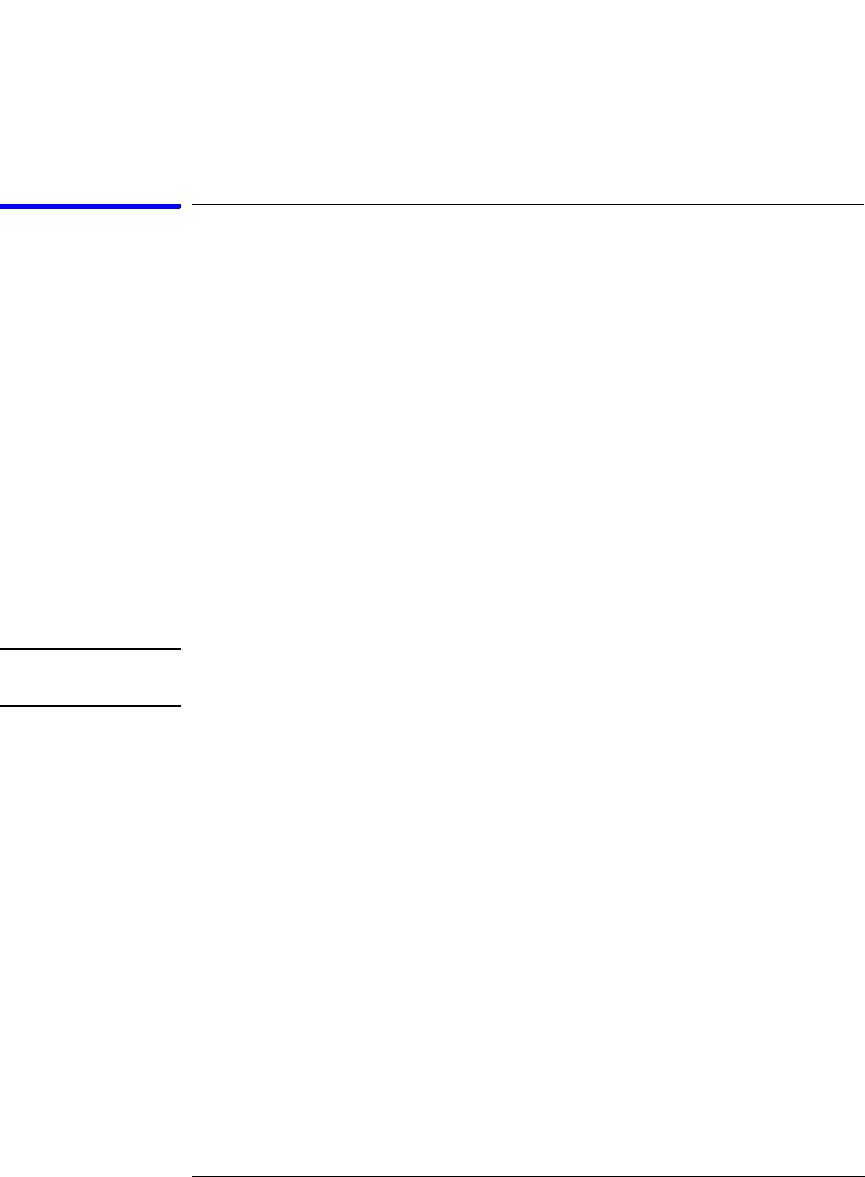User's Manual
Table Of Contents
- Agilent Technologies 16750A/B Logic Analyzer
- Agilent Technologies 16750A/B Logic Analyzer
- Contents
- Getting Started
- Step 1. Connect the logic analyzer to the device under test
- Step 2. Choose the sampling mode
- Step 3. Format labels for the probed signals
- Step 4. Define the trigger condition
- Step 5. Run the measurement
- Step 6. Display the captured data
- For More Information...
- Example: Timing measurement on counter board
- Example: State measurement on counter board
- Task Guide
- Probing the Device Under Test
- Choosing the Sampling Mode
- To select transitional timing or store qualified
- Formatting Labels for Logic Analyzer Probes
- Setting Up Triggers and Running Measurements
- Displaying Captured Data
- Using Symbols
- Printing/Exporting Captured Data
- Cross-Triggering
- Solving Logic Analysis Problems
- Saving and Loading Logic Analyzer Configurations
- Reference
- The Sampling Tab
- The Format Tab
- Importing Netlist and ASCII Files
- The Trigger Tab
- The Symbols Tab
- Error Messages
- Must assign Pod 1 on the master card to specify actions for flags
- Branch expression is too complex
- Cannot specify range on label with clock bits that span pod pairs
- Counter value checked as an event, but no increment action specified
- Goto action specifies an undefined level
- Maximum of 32 Channels Per Label
- Hardware Initialization Failed
- Must assign another pod pair to specify actions for flags
- No more Edge/Glitch resources available for this pod pair
- No more Pattern resources available for this pod pair
- No Trigger action found in the trace specification
- Slow or Missing Clock
- Timer value checked as an event, but no start action specified
- Trigger function initialization failure
- Trigger inhibited during timing prestore
- Trigger Specification is too complex
- Waiting for Trigger
- Analyzer armed from another module contains no "Arm in from IMB" event
- Specifications and Characteristics
- Concepts
- Understanding Logic Analyzer Triggering
- Understanding State Mode Sampling Positions
- Getting Started
- Glossary
- Index

107
Chapter 2: Task Guide
Cross-Triggering
2. Run the measurement.
To cross-trigger with another instrument
1. Select the Intermodule button (or from the Window menu, select System
and Intermodule).
2. In the Intermodule window, select the icon of the instrument to be armed,
and choose the instrument that will arm it.
When the logic analyzer waits for the arm signal
1. In the Trigger tab's Trigger Sequence area, select the sequence level that
should wait for the other analyzer's trigger.
2. In the Trigger Functions subtab, select the Wait for arm in trigger
function and select either the Replace or Insert before button.
(You can also use an advanced trigger function, edit it, and insert an Arm
in from IMB event.)
NOTE: If the trigger sequence does not pass through the level containing the wait for
arm event, the logic analyzer will not wait for the arming signal.
When the logic analyzer drives the arm signal
1. In the Trigger tab's Settings subtab, select the analyzer (or analyzers) that
will be used to drive the arm signal.
2. Set up the logic analyzer trigger as you would normally.
In the Trigger tab's Trigger Sequence area, the trigger actions will show
arm out to indicate that the logic analyzer's trigger is driving the arm
signal.
3. Run the measurement.
See Also Intermodule Window (see the Agilent Technologies 16700A/B-Series
Logic Analysis System help volume)
Group Run Arming Tree (see the Agilent Technologies 16700A/B-Series
Logic Analysis System help volume)










